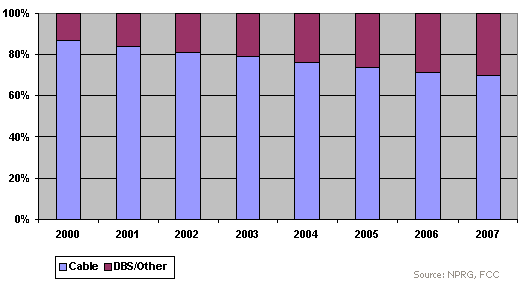By Craig M. Clausen and Joseph J. Kestel
Following an okay 2005 and a stellar 2006, the cable sector was beaten up by industry-watchers in 2007. Implementation of VoIP service went better than expected overall, creating high expectations mid-decade; when AT&T and Verizon went into high-gear with their fiber rollouts last year, with promising early success, they took the spotlight away from cable once again.
But cable is poised for another renaissance. VoIP services continue to grow; new services, such as interactive programming and ultra-high-speed Internet access, offer better consumer satisfaction and additional revenue; and an industry-wide strategic push into the commercial customer segment is yielding solid early returns and beginning to throw the telcos back on their heels.
Continued Dominance in Video and High-speed Internet
Cable companies' historical strength has been their dominance as providers of subscription-television services (see Table 1). Earlier this decade, competitors, mainly in the form of satellite television providers like DirecTV and DISH Network, cut into this dominance. However, by migrating consumers from analog to digital platforms, cablecos have regained some tangible advantages and generally slowed subscriber losses in recent years.
Cablecos' expanded video offerings—including video on demand (VOD), integrated digital video recorders (DVRs), and other digital service enhancements like interactive program guides—have improved and compare favorably with not only satellite services but also the telephone companies’ Internet protocol television (IPTV) offerings.





